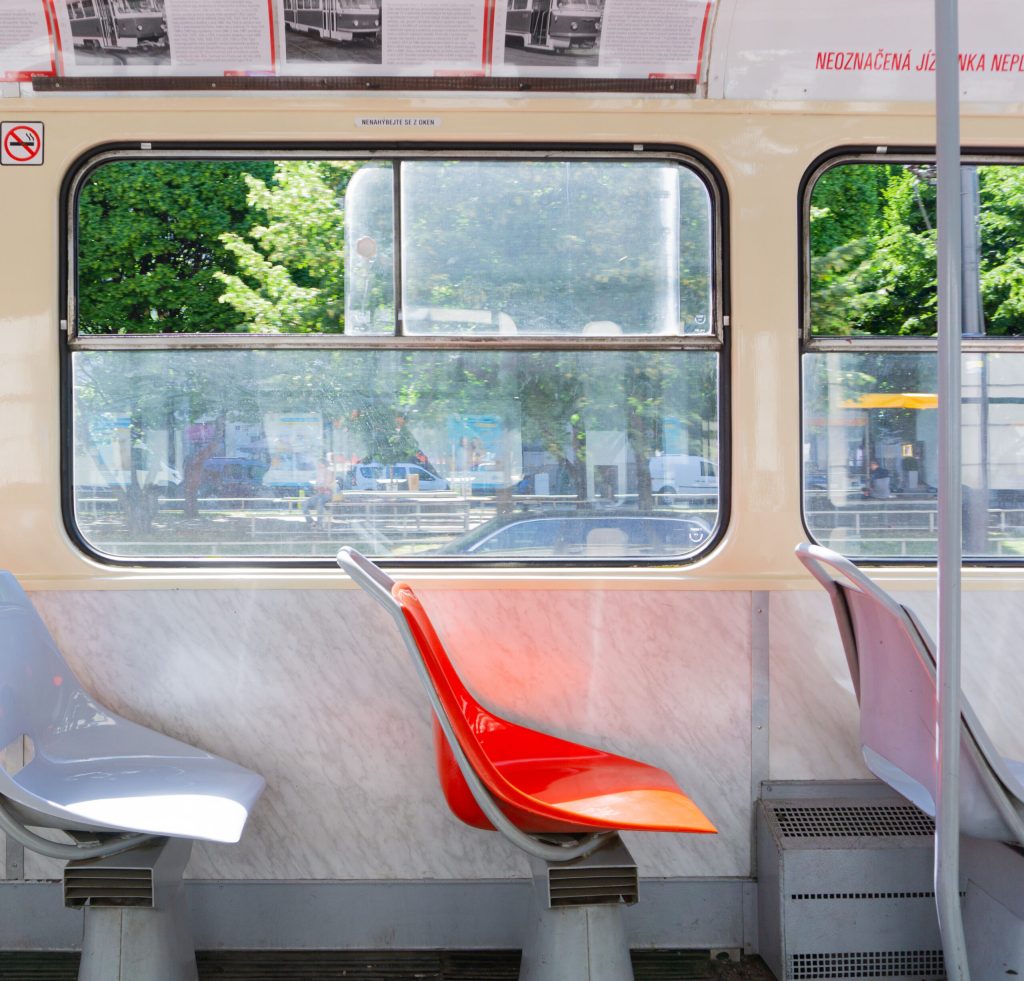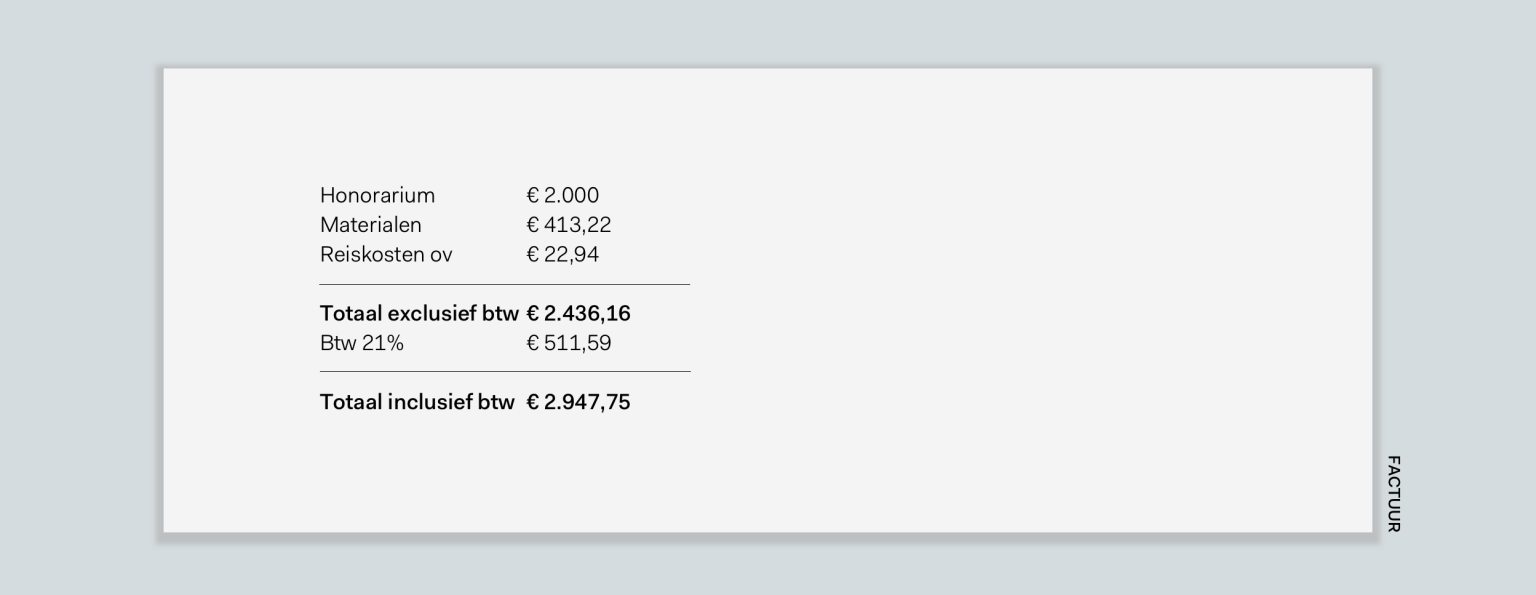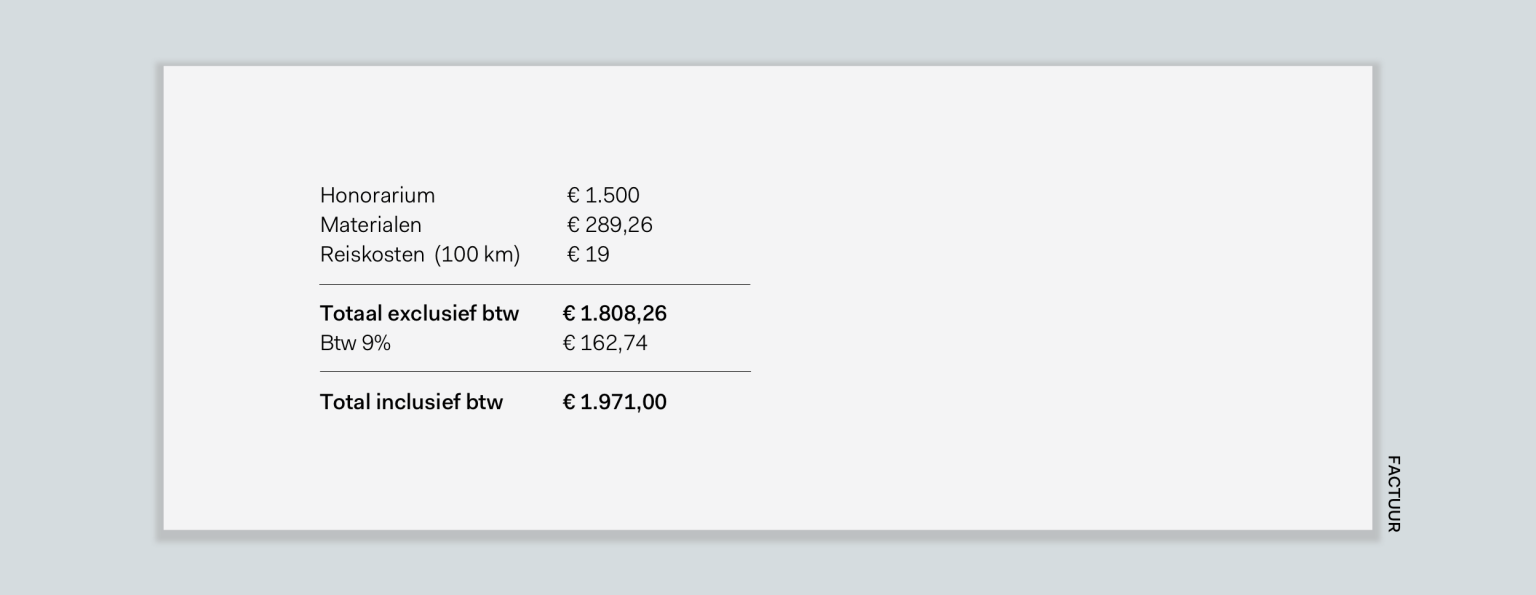When you’re doing a job for a client, you may incur various costs. Things like travel costs, such as taxis or car use, but also materials, literature or shipping costs. If you’ve agreed with your client that you can charge these expenses afterwards, you need to add them to your invoice. How to process these costs in your administration?
Filing in administration
Charged on costs is an expression for expenses that you incur when you’re working on an assignment and on which you’ve agreed with your client that they’ll be reimbursed. For example, if you’re hired to make a mural, you’ll probably agree on a fixed fee for creating the artwork. In addition, you and the person who hired you have agreed that the client will pay for any materials and travel costs. Of course, you don’t know what the height of these expenses is going to be until you’ve finished the assignment. For you, the costs you incur are regular business expenses. This means that you include these in your books and that they’re deductible in your administration. You can reclaim the VAT and you save the receipt. So far, so good.

Translating expenses to invoice
The assignment is done and you want to draw up the invoice. But how do you add these expenses to the total amount, and what about the VAT? As a general rule, you always charge VAT on expenses to your client: it’s part of the costs. The VAT percentage you should calculate is the one that applies to the main activity on the invoice, even if the expenses fall under a different VAT rate. In short: you charge the same percentage on the total amount. You add the amount of the costs excluding VAT. After reclaiming the VAT, this is the amount that you paid initially. Are you not allowed to reclaim VAT or aren’t you able to? Use the amount including VAT.
Example 21% VAT
The aforementioned mural is taxed with 21% VAT. You have agreed on a fee of € 2,000. The materials you purchase to make it are € 500 including 21% VAT and the train ticket is € 25.50 including 9% VAT.

Example 9% VAT
In the case of tangible art, such as a painting, you have to charge the low rate of 9% VAT. The materials you need are taxed with 21% VAT and because you travel by car, you’ve agreed to charge € 0.19 cents per kilometre.

Common mistakes
When charging expenses, entrepreneurs often make mistakes when calculating VAT. For example, they charge VAT on the service, but not on the expenses. Or they charge a different VAT rate on the costs than on the main activity. But the basic rule is actually very simple: are the costs secondary to the service? Then you charge one VAT rate on the total amount. Do you want to make sure that you process everything correctly? Please contact your bookkeeper!


